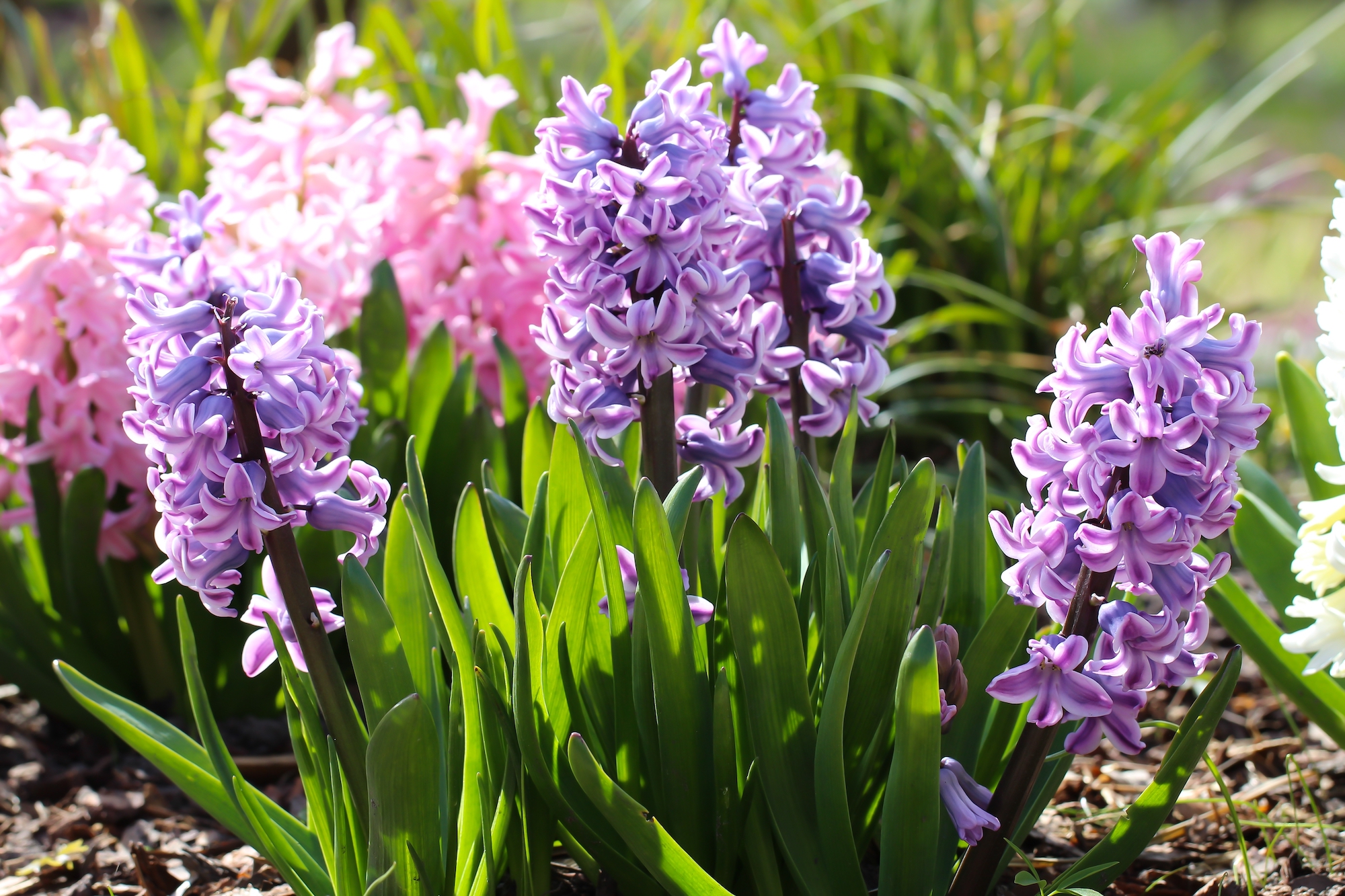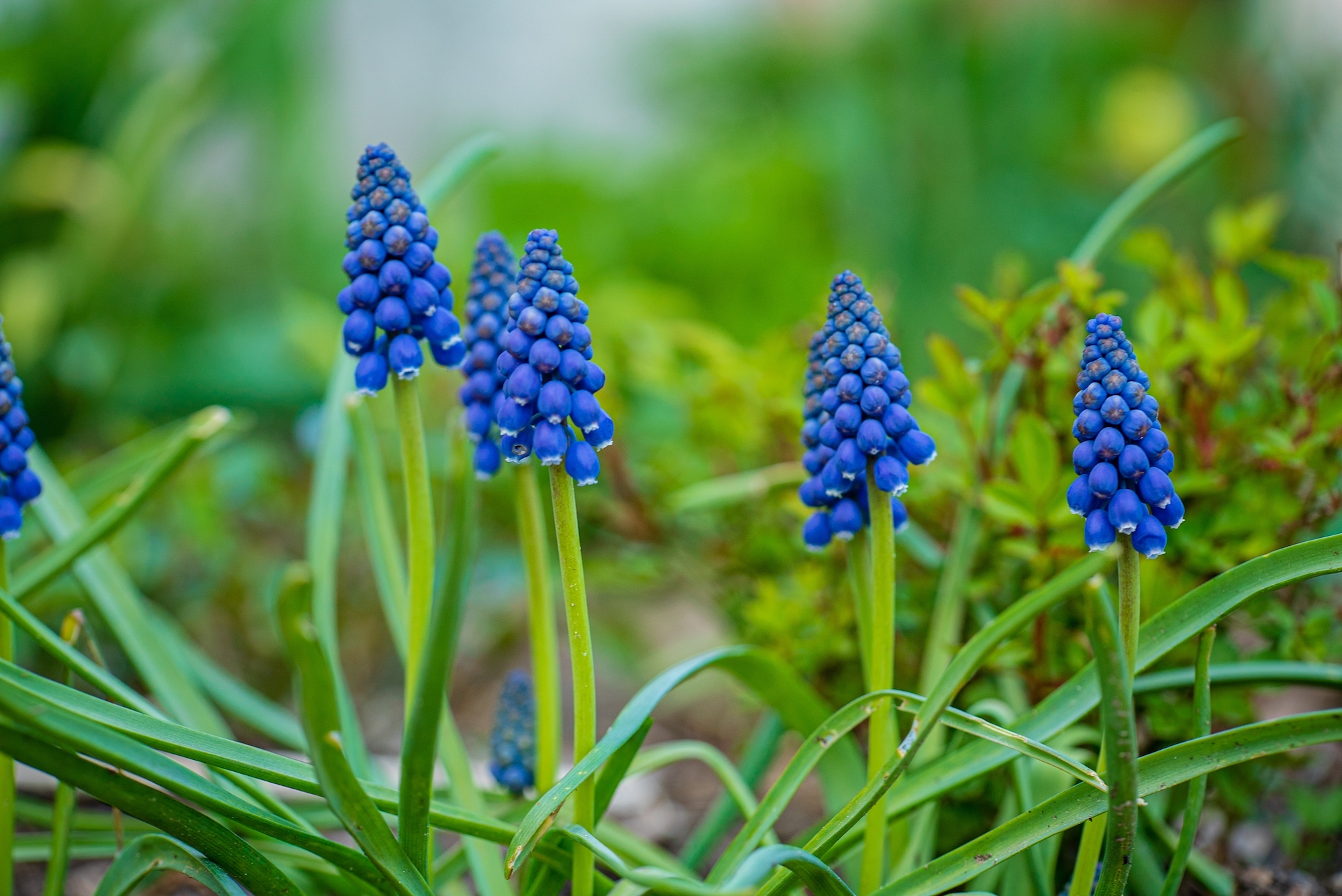
Planting, Growing, and Caring for Hyacinths
Read Next
Types
- Hyacinth orientalis ‘Blue Jacket’: One of the great blues of the flower world. These award-winning hyacinths display big columns of royal blue florets with crisp white edges.
- H. orientalis ‘City of Haarlem’: A wonderful heirloom variety that’s been popular since the late 1800s. The flowers are soft, primrose yellow, maturing to creamy white.
- H. orientalis ‘Gypsy Queen’: ‘Gypsy Queen’ is an heirloom hyacinth with salmon pink petals with peach and buttery-yellow highlights.
- H. orientalis ‘Jan Bos’: Intensely fragrant, this award-winning hyacinth has fuschia-pink florets that are tightly packed into large flowerheads.
- H. orientalis ‘Miss Saigon’: With a deep, rich purple color, this fragrant hyacinth is covered with starry, violet florets. Gorgeous!
- H. orientalis ‘Pink Pearl’: Rose-pink flower heads turn heads with their cotton-candy sweetness; ‘Pink Pearl’ is a favorite for spring containers to add a pop of color.
- Muscari armeniacum: This grape hyacinth has small and delicate cobalt-blue flowers that look gorgeous when planted en masse.
Gardening Products
More Like This
Hi Cheryl, Those little "bulbs" are seed pods. They will mature into a tan color and then split open to disperse their seeds for next year! (If you do not want more hyacinth, you can cut off the seed pods that appear after the blooms fade.) Best, The Old Farmer's Almanac gardeners
Hi, Cheryl, Hyacinths are bulbs; they flower and fade. You might bring it back if you left it dry out, and when the foliage (the green bands of leaf) dies back (dries out), cut it off and, in the fall, plant the bulb. It will need a few weeks or so of cold weather. It might bloom again next spring. (I say "might" because it was probably forced to be in bloom for Easter; you can not always be certain that it will come back . . . but it might.)
If you are not in an area that has a cold winter, you could try forcing it. Here is some advice on doing that https://www.almanac.com/fooling-mother-nature-forcing-bulbs
We hope this helps!
This commonly happens with bulbs that haven't been chilled long enough. They require about 12 weeks of cold temps to get them "in the mood" for blooming properly. If you buy them from a supplier, they should already be chilled, but you could try chilling them for a few more weeks before planting them. Also make sure that you're planting at the right depth—they should sit about 4 inches deep.
- « Previous
- 1
- 2
- …
- 10
- Next »













Comments